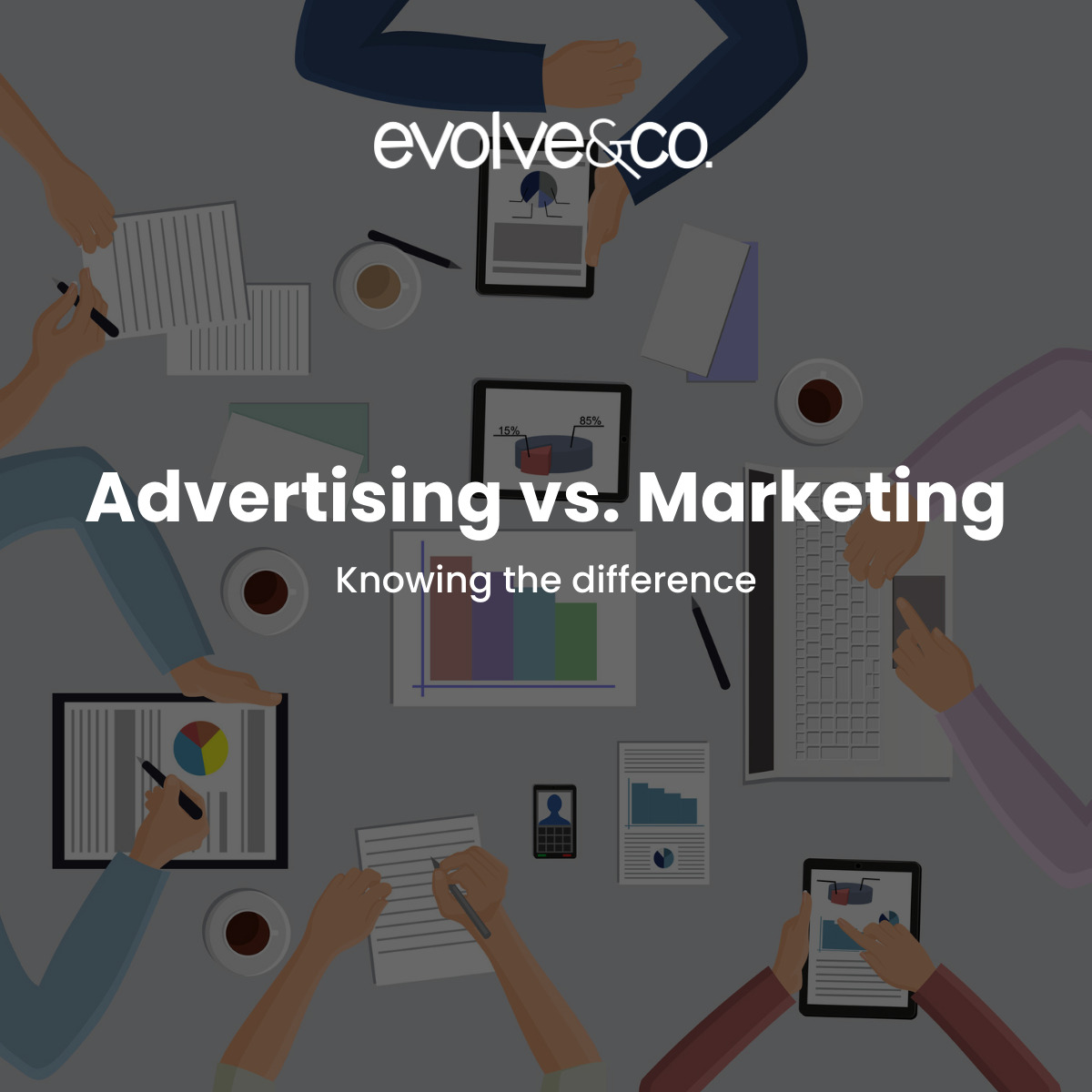Marketing, advertising, public relations, sales, copywriting, media planning, etc. — it’s all the same right?
Well of course not.
From the outside looking in, marketing is loaded with complex technical terms and countless divisions of labor. It may seem like it’s all painted with the same brush, with differences being as nuanced as the colors burgundy and scarlet. But for those who truly know the art of the industry, each specific function is as distinctive as black and white.
In particular, marketing and advertising are often conflated as one in the same. Subtle differences are commonly overlooked, and their underlying purpose misunderstood. These two closely related concepts are objectively different however, both technically and in practice.
Marketing
The American Marketing Association (AMA) defines marketing as “the activity, set of institutions, and processes for creating, communicating, delivering, and exchanging offerings that have value for customers, clients, partners, and society at large” (AMA, 2017). Although comprehensive, text-book definitions like this are sometimes too drawn-out for many people. To translate this into simpler terms, marketing is how businesses promote their brand and generate sales.
This normally involves what is known as “the four P’s of marketing”: product, place, price, and promotion. These are regarded as the fundamentals; they are the basic tools at every business’s disposal. The four P’s often determine how successful — or unsuccessful — a business will ultimately be.
Without proper marketing, businesses will operate deficiently. Products would be of poor quality, and the locations that sell them will be inconvenient to access. The prices would either be too high or too low, hindering maximum profit. And without promotion, target audiences will not be effectively reached.
Advertising
In regard to promotion, the most popular form is advertising.
Advertising can be defined in a number of ways, but a personal favorite comes from Jeff Goodby, who simply describes it as “art serving capitalism” (MasterClass, 2020). What Goodby means by this is that advertising has a great deal of artistic value. But unlike most traditional art that is made purely as a form of individual self-expression for the sake of organic beauty, advertising is a specific brand of art that serves businesses to make profit.
A more formal definition of advertising is “the action of calling something to the attention of the public especially by paid announcements” (Merriam-Webster, 2021). The ultimate objective is to reach as much of a business’s target audience as possible, generating favorability and revenue as a result.
Advertising distinguishes itself from other forms of promotion by being significantly cost efficient and impactful. In fact, the average televised commercial in a small or medium market can be as affordable as $5 per 1,000 impressions (Alger, 2021). Advertising offers considerable savings opportunities and widespread exposure, thanks to technological advancements that enable mass communication.
It is a window between business and consumer, and typically a one-way line of communication that business owners have full control over. Advertising is often the most enjoyed form of promotion, offering substantial creative, entertainment, and storytelling value to its audiences.
Generally put, advertising is the process of conceptualizing creative projects for the use of marketing, and then producing them through a paid medium such as television, radio, or internet.
So how does this exactly differ from marketing then?
Why They Are Different
Indeed explains that “advertising is an aspect of marketing, and it is the communication used by a company to deliver a marketing strategy… [carrying] out one aspect of the marketing plan of the company” (Indeed, 2021). Marketing is the general term for reaching an audience and promoting a brand, while advertising is just one of the specific methods for doing so.
Marketing is a fairly broad industry, comprising various lines of work within its business structure. Public relations, personal sales, and social media management are just some of the promotions that parallel advertising beneath the general umbrella of marketing.
Conclusion
Marketing is a streamlined and organized system of duties. It is composed of the four P’s, and within that is promotion, and within promotion there is advertising.
Advertising is one of the most effective ways for businesses to promote themselves, which in turn, helps with their overall marketing strategy and success. Both marketing and advertising share similar characteristics, but to once again clarify, marketing is the broad overall system, while advertising is just one of its specific tools.
Sources
Alger, G. (2021, February 22). How Much Does a TV Commercial Cost? Skyworks Marketing. http://skyworksmarketing.com/tv-commercial-cost.
AMA. (2020, December 3). What is Marketing? – The Definition of Marketing – AMA. American Marketing Association. https://www.ama.org/the-definition-of-marketing-what-is-marketing/#:~:text=Marketing%20is%20the%20activity%2C%20set,Approved%202017).
Indeed. (2021, February 25). What Is the Difference Between Marketing and Advertising? Indeed. https://www.indeed.com/career-advice/finding-a-job/difference-between-marketing-and-advertising.
MasterClass. (2021, March 18). Meet Your Instructors: Jeff Goodby & Rich Silverstein. MasterClass. https://www.masterclass.com/classes/jeff-goodby-and-rich-silverstein-teach-advertising-and-creativity/chapters/meet-your-instructors-jeff-goodby-rich-silverstein#transcript.
Merriam-Webster. (n.d.). Advertising. In Merriam-Webster.com dictionary. Retrieved April 7, 2021, from https://www.merriam-webster.com/dictionary/advertising

